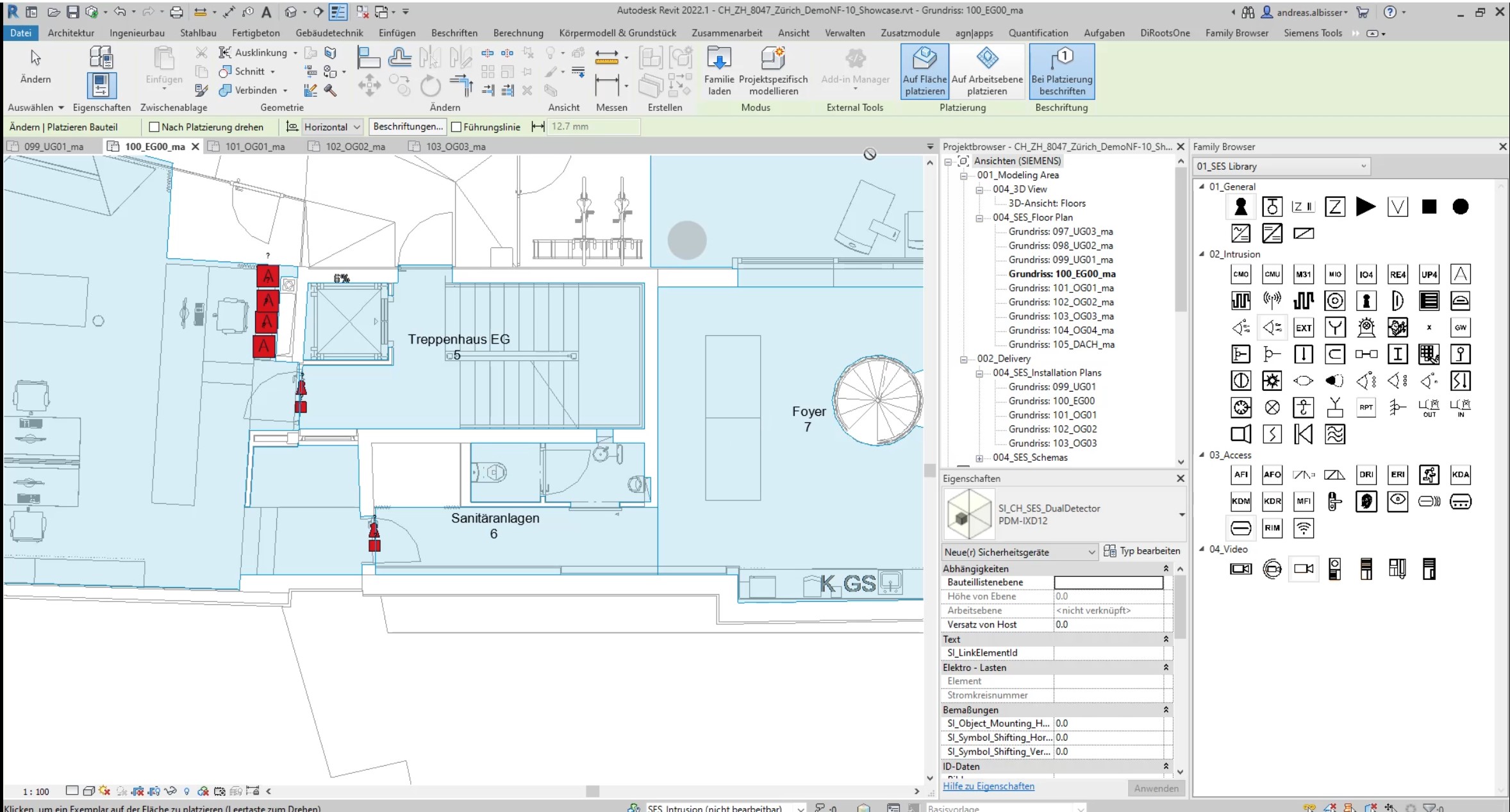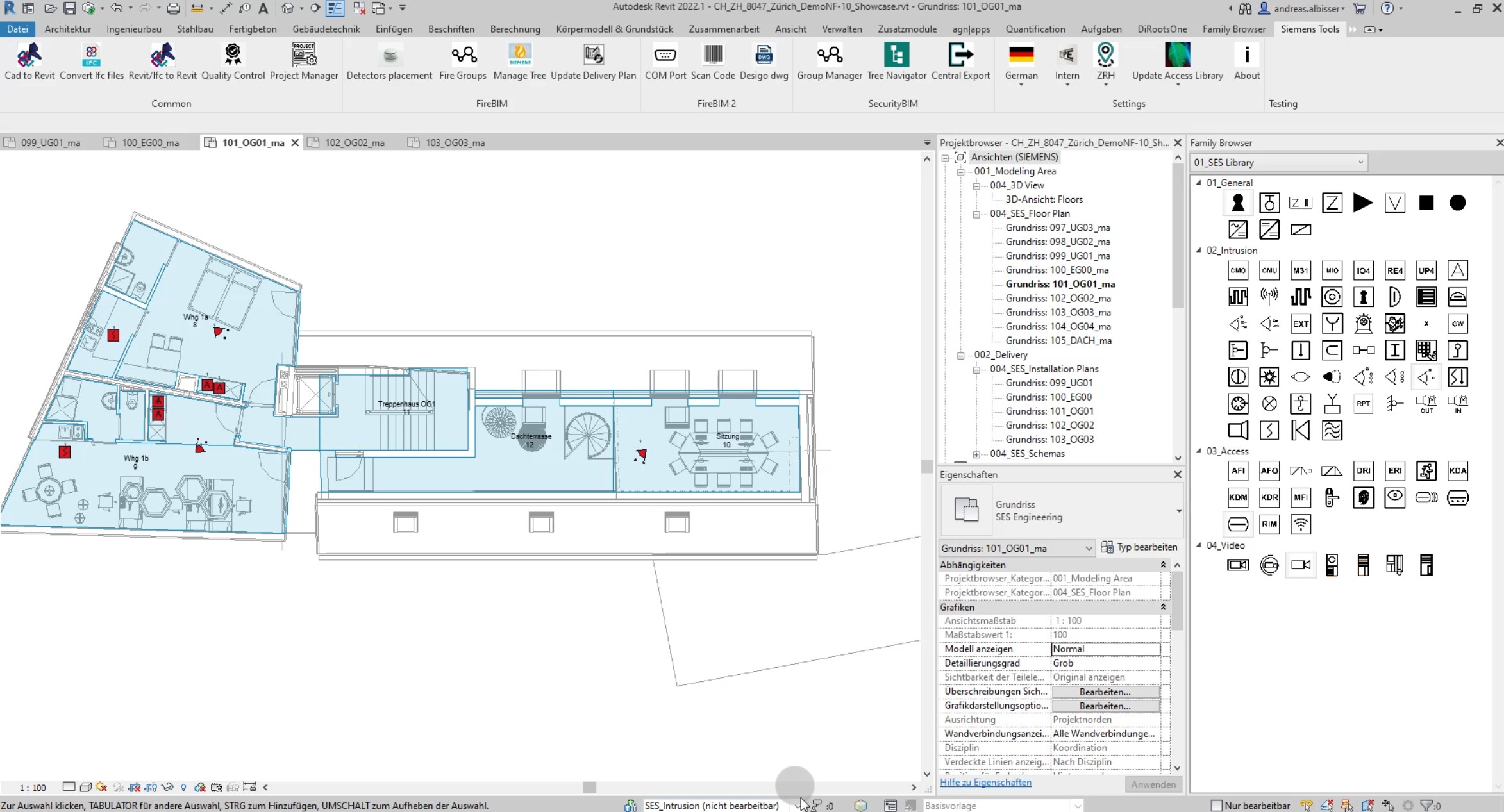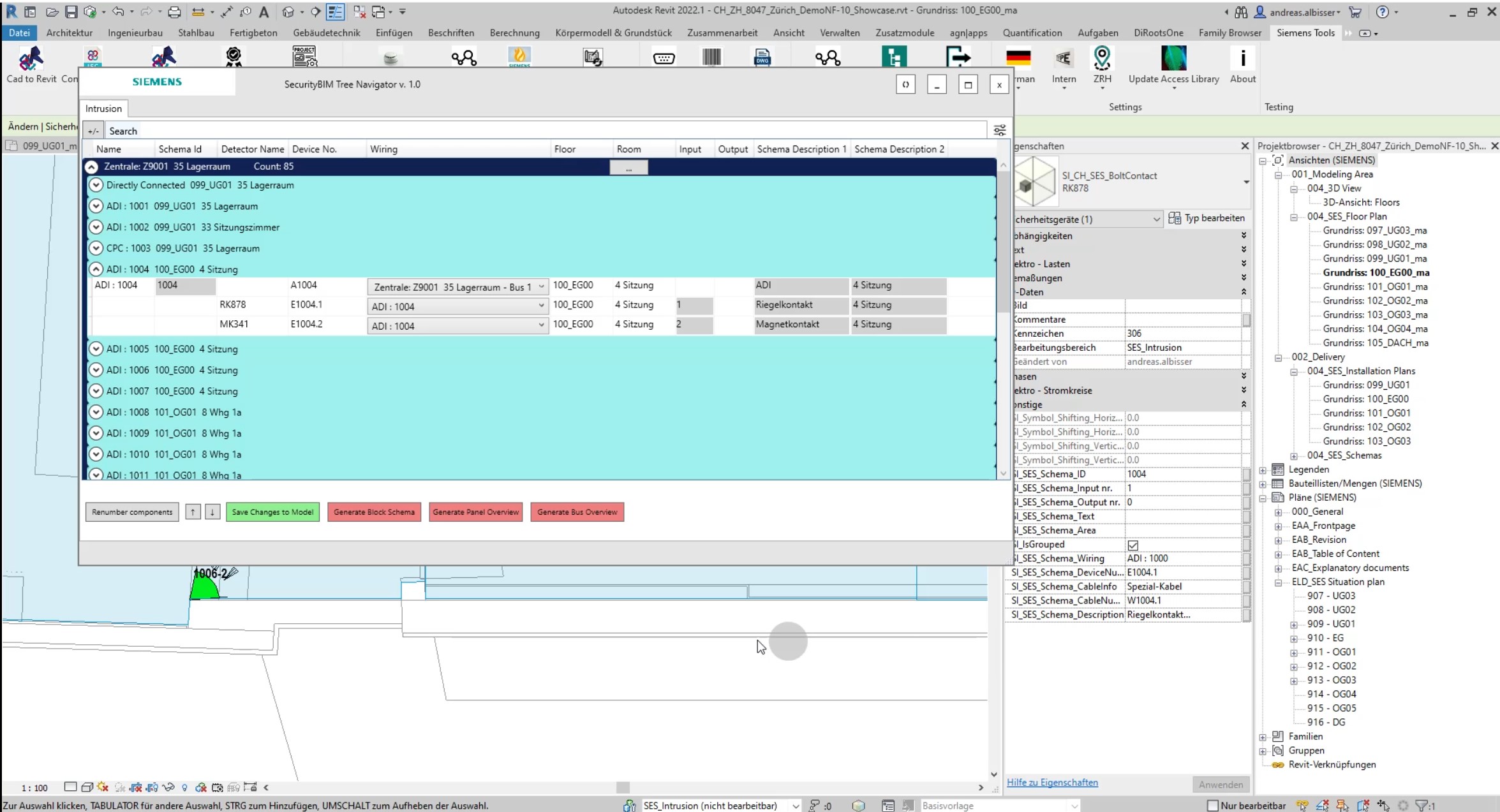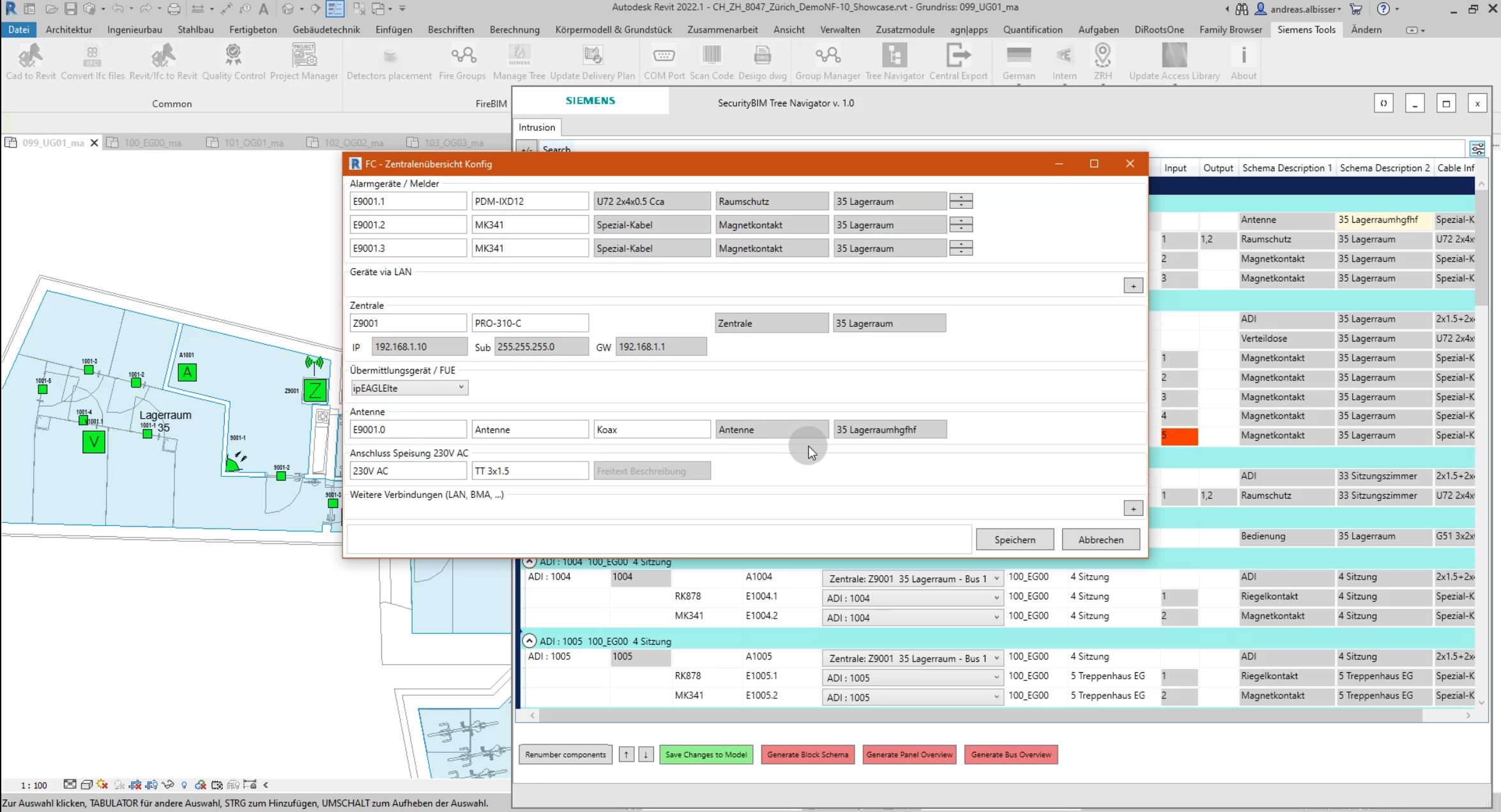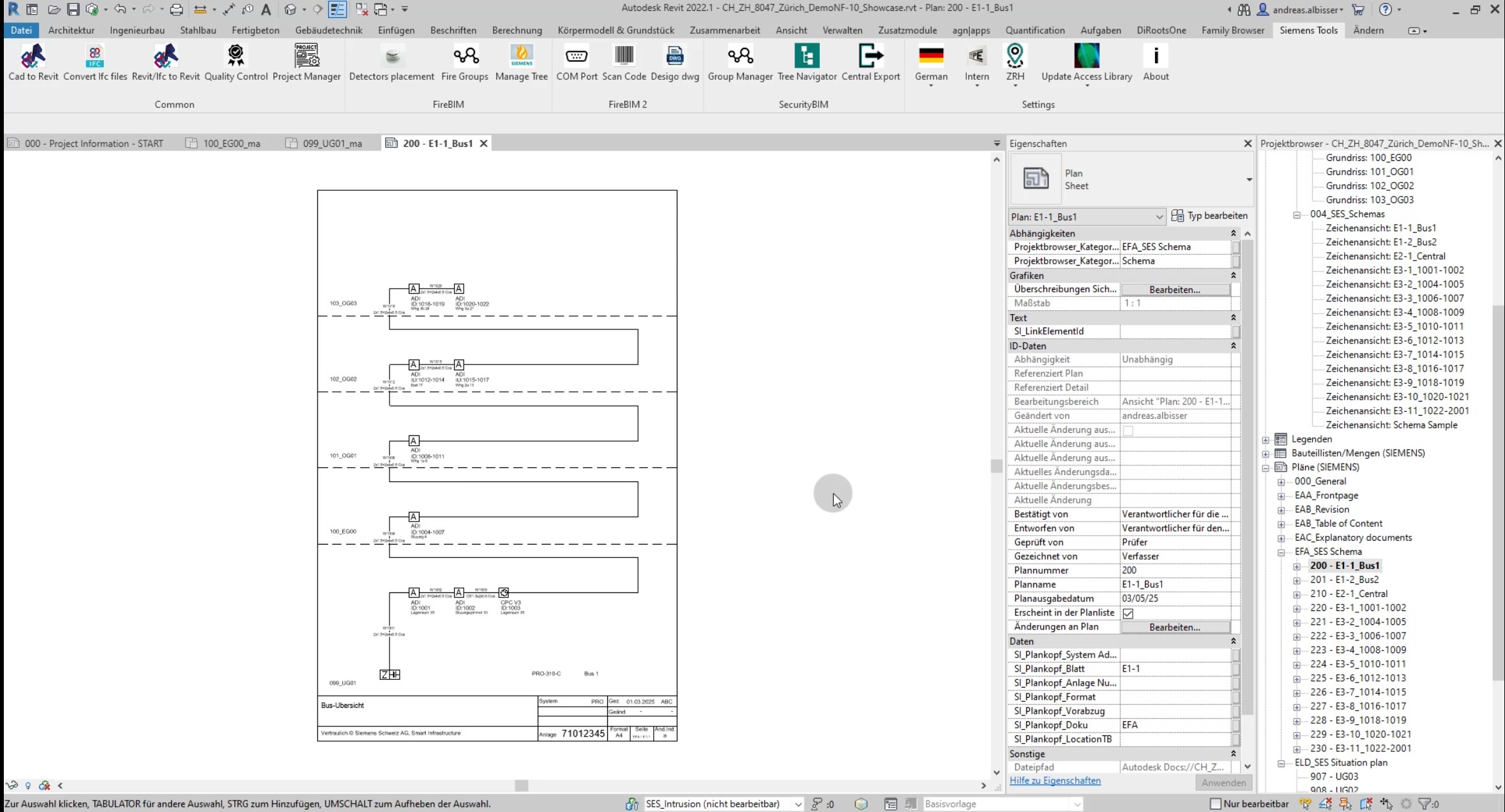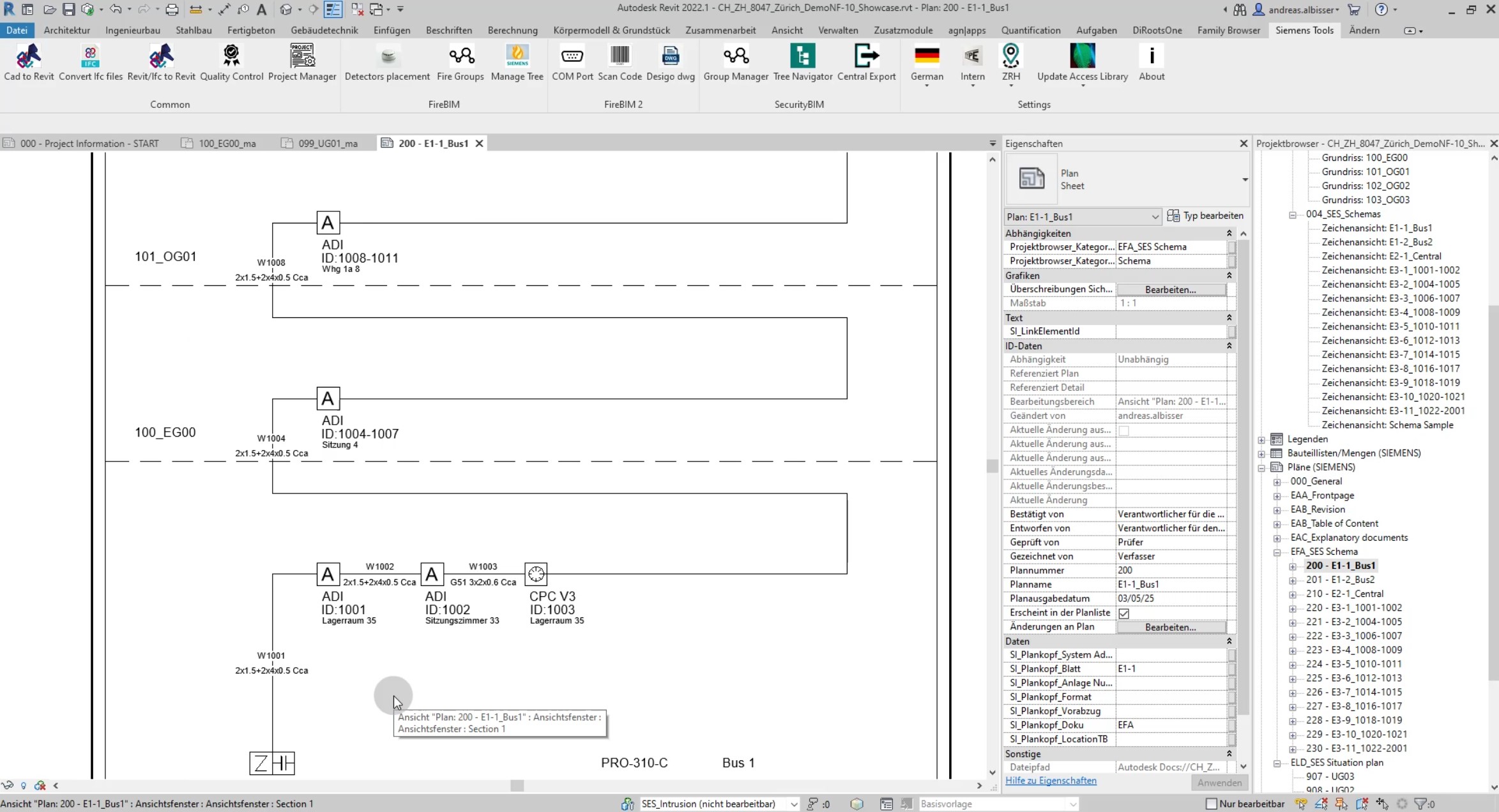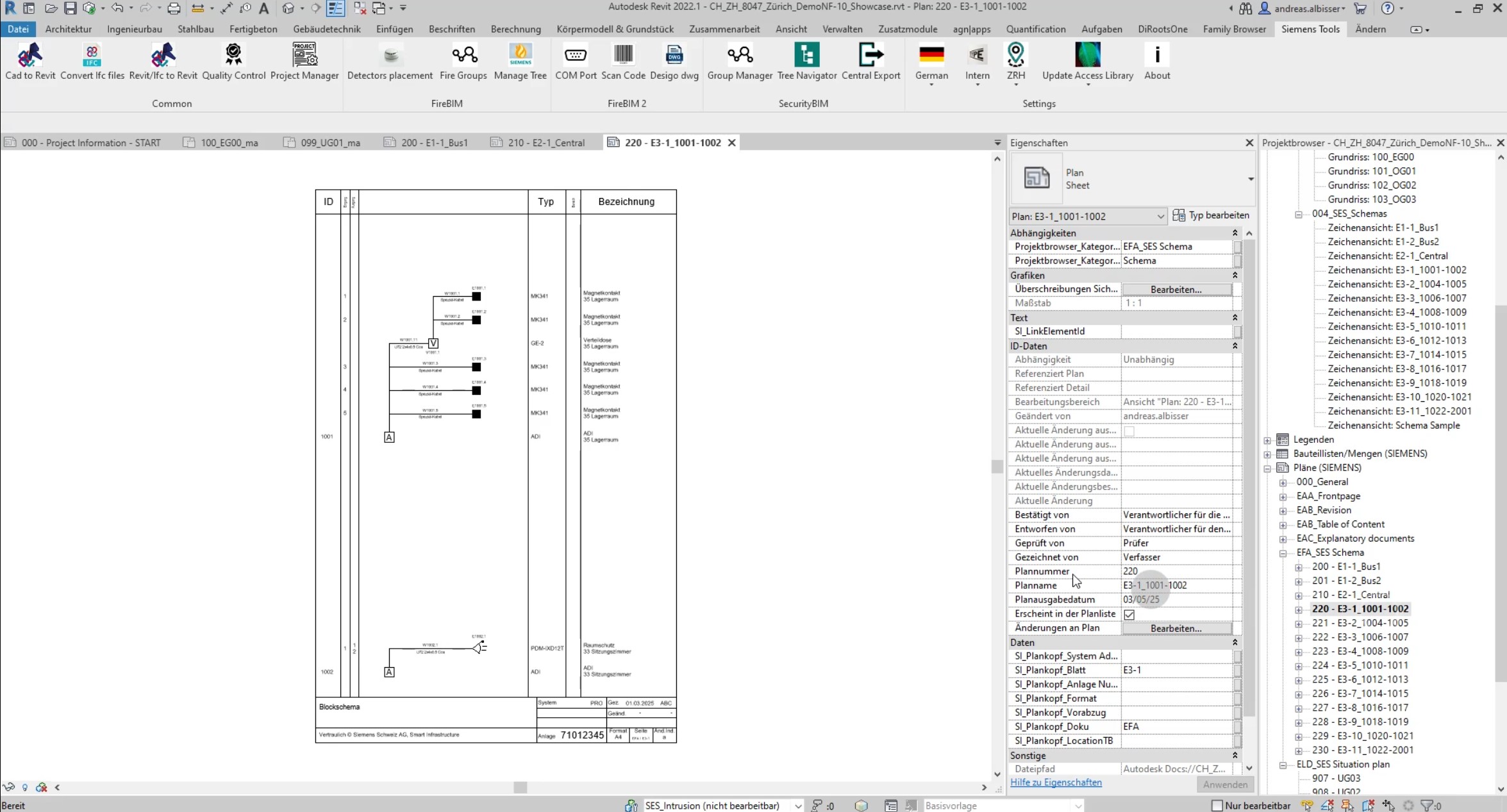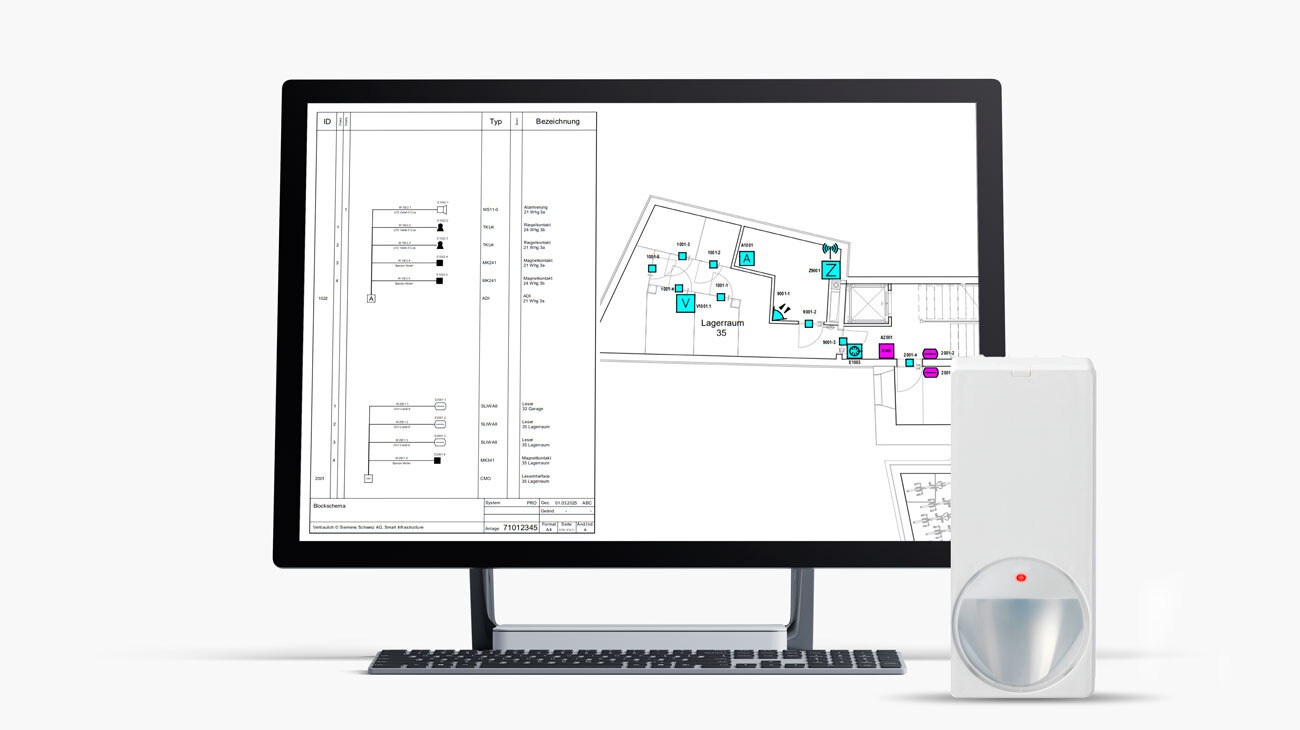
Der unter der Leitung von SIEMENS entwickelte SecurityBIM-Workflow ist ein Prozess, der die Planung von Sicherheitssystemen (z. B. Einbruchmeldeanlagen) erheblich beschleunigt. Im Kern dieses Workflows steht das einfache Platzieren von Sicherheitskomponenten aus vorbereiteten Familien in ein Autodesk Revit-Modell. Nach dem Einfügen (per Drag & Drop über den Family Browser) werden ihnen automatisch verschiedene Attribute zugewiesen, z. B. die zugehörigen Räume. Die Komponenten sind einfach zu verwalten, und vordefinierte Standardtexte können bei Bedarf angepasst werden. Zusätzlich können spezifisch benötigte Attribute ergänzt werden, einschließlich Metadaten zur gegenseitigen Verknüpfung. Auf dieser Basis lassen sich verschiedene Ausgaben automatisch erzeugen und zu einem ausführungsreifen Dokumentationspaket zusammenstellen – von statischen Standarddokumenten wie Zeichnungslisten oder Legenden bis hin zu dynamischen Elementen (z. B. Busübersichten, Zentraleinheitenübersichten, Blockdiagrammen oder standardisierten 2D-Plänen). Dadurch wird der gesamte Engineering-Prozess deutlich beschleunigt und vereinfacht, sodass sich Planer auf ihre Kernaufgaben konzentrieren können, statt zeitaufwändige Routinetätigkeiten zu erledigen.
Automatisch generierte Bereiche
3
Busübersichten, Zentralenübersichten, Blockschemata
Arbeitsaufwand von
2
Stunden für das Aufsezten des Beispielobjektes auf dem Video
Steigerung der Effizienz um
70%
durch Automation und einen einfachen Drag-and-Drop-Prozess
Der Workflow beginnt mit dem Einfügen von Sicherheitskomponenten (Familien) in Autodesk Revit, die bereits über alle benötigten Attribute verfügen. Das Hinzufügen zum Projekt erfolgt durch einfaches Ziehen aus der Bibliothek via Family Browser oder Revit-Projektbrowser. Jede Familie ist so konzipiert, dass ihr 2D-Symbol dem 3D-Modell entspricht und ein kombiniertes Arbeiten sowie weitere Anpassungen möglich sind. Nach dem Platzieren im Modell können diese Elemente gruppiert (also verknüpft), nummeriert und damit in eine Hierarchie und Reihenfolge gebracht werden. Die Verwaltung von Attributen – etwa IP-Adressen oder Element-IDs – wird dadurch erleichtert, dass die meisten Informationen direkt aus den Familien vererbt werden und sich zentral über die Plugin-Oberfläche bearbeiten lassen.
Aus diesen platzierten Objekten lassen sich anschliessend verschiedene Schemata automatisiert generieren, darunter Busübersichten, Zentralenübersichten, Blockschemata sowie standardisierte 2D-Pläne. Die Busübersicht listet dabei alle relevanten (Bus-)Geräte in übersichtlicher Folge auf, beginnend mit der Zentrale und unterteilt nach einzelnen Stockwerken. Jedes Element enthält Detailinformationen (z. B. ID und verknüpfte Raumbezeichnung). Die Zentralenübersicht zeigt die Zentrale mit Detailangaben, die angeschlossenen Geräte (inklusive Typ und Bezeichnung) und externen Verbindungen mit den zu verwenden Kabel. Im Blockschema werden sämtliche Buskomponenten mit dessen zugehörigen Geräte (z. B. Melder) inklusive Typenbezeichnung, Bezeichnungstexte und Kabelbezeichnung dargestellt. Konsistente Situationspläne mit den platzierten Meldern werden durch Ansichtsvorlagen einheitlich dargestellt.
Zusammen mit Begleitdokumenten werden die generierten Inhalte und Situationspläne zu einer Ausführungsdokumentation gebündelt. Dieser Ansatz vereinfacht die Erstellung der Projektdokumentation erheblich, reduziert Routinetätigkeiten auf ein Minimum und spart sowohl Zeit als auch Engineering-Ressourcen.
Client
SIEMENS Schweiz AG
Credits
SIEMENS Schweiz AG
ioLabs AG
|
Technology
Revit API
C#
|

